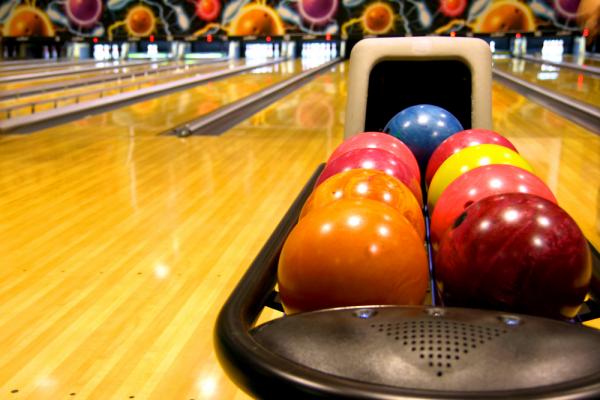PEORIA, Ill. — When Max and Nancy Carson got married at St. Ann Catholic Church in 1974, the organ music was accompanied by the unmistakable sound of balls crashing into bowling pins.
"I said 'I do' and bowling balls were flying," said Max Carson, 62, who didn't know then that the St. Boniface Bowling Alley, built in 1945, was housed in the church basement. Now he plays in the Has-Beens League every Wednesday morning in the four-lane alley.
"I always joke that if I preach too long, people go downstairs and start bowling," said St. Ann's pastor, the Rev. Terry Cassidy.
St. Ann's little bowling alley is almost as popular now as it was after parishioners created the hideaway, which has a bar and dining room. It was rebuilt after a fire in the 1960s. Two leagues, one for men and another for women, play on Wednesdays, and parties are booked for almost every Friday and Saturday night, manager Jim Seppelt said.
Church bowling alleys are disappearing fast. There are probably fewer than 200 left, said Neil Stremmel, of the U.S. Bowling Congress.
Doug Schmidt, author of the 2007 book "They Came to Bowl: How Milwaukee Became America's Tenpin Capital," said that city once had at least 13 church bowling alleys.
"They came with German immigrants in the 1860s," Schmidt said. "Most closed in the 1980s or '90s."
Milwaukee's St. Martini Lutheran Church built its eight-lane alley in 1954, said church secretary Trudi Groth. In 2004, four lanes were dismantled to make space for a lunchroom. Two years ago, the final four lanes were replaced by classrooms.
The last time Trinity Evangelical Lutheran Church in New Haven, Conn., organized a bowling night at the four lanes in its basement, nobody showed up.
"I don't know if it's the times, the location," parish administrator Pat Sundermann said.
It's particularly sad, she said, because the bowling alley was refurbished a few years ago in memory of Eddie Vanacore, who grew up in the church and died in the World Trade Center on Sept. 11, 2001.
The space is used mostly for meetings now, Sundermann said. She isn't certain when the bowling alley was built, but by the 1950s it was hopping, she said.
"Everybody wants to go down and look and smile and joke, but nobody wants to bowl," Sundermann said.
It's a different story at the Church of St. Francis de Sales in St. Paul, Minn. Its six-lane bowling alley, built in 1939, is in the basement of a school building it rents out and is used for gym classes, league play and parties.
After another church bowling alley in St. Paul closed recently, church administrative assistant Pam Gripman said, "I think we're the only one left in the area. It's kind of a legend."
The six-lane bowling alley operated by St. John's Catholic Club at St. John the Baptist Catholic Church in Kansas City, Kan., also is prospering, president Kenny Yarnevich said.
The lanes, built below a church gym in 1923, are used by four leagues and for parties and fundraising events. "We have cheap sandwiches and beer ... and we're family oriented," he said.
Many of the 20 or so retired men who gather for Wednesday morning league play at St. Boniface Bowling Alley don't belong to St. Ann Catholic Church. They come for the good company and the relaxed atmosphere.
"Everybody roots for everybody," said Gary Heinz, 63, a former Caterpillar Inc. worker. "Despite age, aches and pains, everybody comes," he said. The two oldest participants are 85.
Billy Purcell, 69, and George Rothan, 70, bowled here together in high school, then lost touch for a half-century. Now they bowl together again in the Has-Beens League.
"It's the camaraderie that keeps people coming back," said Purcell, a retired railroad engineer.
If he had $22,000, Seppelt, the manager, said he'd install new synthetic lanes and approaches, which could bring scores up. The alley, which charges $75 for parties, won't be able to afford that any time soon, he said.
Sharon Bailey, 68, who helps run the women's league, long called the St. Boniface Mother's Club, has been bowling here for 43 years — though, like many bowlers here, she also plays at big commercial alleys.
"It's all women, talking about kids and now grandkids," she said. "We have some younger ones in the league. I hope they'll continue the tradition."
Judy Keen writes for USA Today. Via RNS.
Got something to say about what you're reading? We value your feedback!
